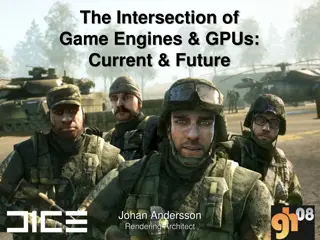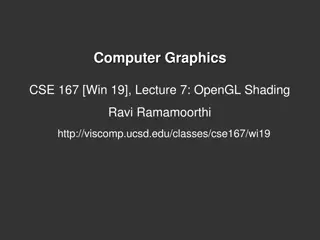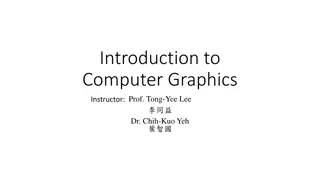Shader Fundamentals: Compiler Control and Global Options
Understanding how shaders are compiled with optimization control using pragma directives, managing shader processing in extension blocks, organizing shader variables into blocks, specifying uniform blocks, and controlling layout with qualifiers.
0 views • 20 slides
Mastering Maya Arnold Lighting, Texturing, and Rendering
Learn how to create stunning 3D art and animations using Maya's Arnold lighting techniques for exterior and interior scenes. Explore texturing with Arnold shaders to enhance realism and detail, and master rendering settings for high-quality output. From setting up skydomes to fine-tuning materials,
1 views • 9 slides
Game Engines & GPUs: Current & Future Intersection with Graphics Hardware
Explore the current and future landscape of graphics hardware in relation to game engines and GPUs. Delve into the use cases, implications, and advancements in areas such as shaders, texturing, ray tracing, and GPU compute. Learn about Frostbite, DICE's proprietary engine, and its focus on large out
0 views • 45 slides
Understanding OpenGL Shading and Lighting Techniques
Explore the world of OpenGL shading and lighting through lectures on computer graphics. Delve into methodologies, demo examples, importance of lighting, color primers, and shading techniques like Gouraud and Phong. Gain insights into vertex and fragment shaders, different types of lighting, and mate
0 views • 41 slides
Overview of OpenGL: A Comprehensive Guide
OpenGL, a vital graphics library, was created in 1991 by Silicon Graphics and is now managed by the Khronos consortium. It serves as a language and platform-independent API for rendering 2D/3D graphics, interacting with GPUs. OpenGL offers a rich set of functions and constants, supports applications
0 views • 77 slides




